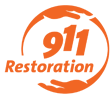Nooks and Crannies That Mold Can Hide In – Commercial Property Restoration
 Finding mold growth in nooks and crannies is always a possibility. The chances of finding mold growth in nooks and crannies of commercial properties are even higher as commercial properties can go through different administrators and cleaners.
Finding mold growth in nooks and crannies is always a possibility. The chances of finding mold growth in nooks and crannies of commercial properties are even higher as commercial properties can go through different administrators and cleaners.
Hence, remediating mold from commercial properties might prove to be more difficult than you imagined. If you’re getting a commercial property deep cleaned or are personally carrying out mold remediation at a commercial property, here are some places that you need to double-check for mold growth:
Carpets
All old carpets have a high chance of mold growth under them. As carpets are mostly installed in commercial places to avoid constant cleanups, they are likely to be much dirtier than they seem. Spills on carpets in commercial spaces are also more common, increasing the chances of mold growth.
If spills go unnoticed, carpets in commercial spaces can go unnoticed for days and can harbor all kinds of germs and foster mold growth. This mold growth can spread under the carpet and result in severe mold exposure to those who regularly use the commercial space.
HVAC System
HVACs system provide the ideal habitat for mold growth with its ducts. HVAC ducts can have moisture and dampness inside them, which mold can easily stick to. While the constant air supply also helps mold grow. Dirt in the HVAC ducts can also add to the ideal environment.
Since HVAC ducts aren’t cleaned weekly or even monthly, mold can continue to grow and expand inside. Mold spores from mold can also be carried to other parts of the commercial property through the HVAC ducts. Even if the AC unit is not used for some reason, it is still a great place for mold to grow while staying hidden.
Kitchenettes
Unless the kitchen in a commercial property is a service kitchen, it is one of the places where there can be guaranteed mold growth. You cannot have effective mold remediation until you check every corner of the kitchenettes in the commercial property.
Start with the microwave. Microwaves in commercial kitchenettes are one of the prime homes of mold. Food spills are common in all microwaves, and these microwaves can stay filthy for days, encouraging the growth of all kinds of fungi.
The crockery available in these kitchenettes is another common place for mold to grow. Since these kitchenettes are small, they rarely have a dish drying rack space. Freshly washed yet damp dishes are often placed in the cabinets to keep the small counter space free. Damp dishes placed in closed cabinets can easily see mold growth.
Similarly, mold can also grow under the kitchen sink or on the splash tiles against the kitchen sink. Since kitchenettes are small and aren’t a priority in most commercial spaces, they are usually dark and poorly ventilated; hence ideal for mold growth.
Last but not least, refrigerator ducts and under trays can also be unkempt and unclean and hence moldy. In short, kitchenettes have greater chances than any other places in commercial properties to grow mold. Keep the kitchen clean and ventilated at all times for effective mold remediation.
Windows and Window Sills
Most commercial property windows are hardly used. Due to their little usage, they may not strike as needing constant cleaning. However, window frames and window sills are likely to grow mold over them.
Window and window sills can easily get damp due to weather conditions. Rain, snow, and even high humidity can make them damp. Glass cleaning liquids sprayed generously can also leave them damp and prone to mold growth.
Since mold only needs air besides dampness, window and window sills become an ideal habitat in no time once they get damp. For effective mold remediation, clean the edges of the windows and window sills regularly too.
Wallpaper
Peeling wallpaper is either a sign of poorly pasted wallpaper or mold growth behind it. In the latter case, the mold problem can become severe in no time since mold from behind the wallpaper can be spread into the air and on other surfaces or corners around the commercial property.
Don’t try to paste the wallpaper again without carrying out mold remediation in case of moldy wallpaper. Mold growth causing wallpaper to peel must be immense. If left untreated, it can seep into the property’s walls and destroy the structure from within.
Finally, don’t neglect any space in the commercial property even if it isn’t regularly used. It is much easier to clean space once a week by spending twenty minutes than carrying it after months and spending multiple days.
If you find that mold growth has spread in any of the above-mentioned spots, DIY mold remediation may not work. Don’t hesitate to call a professional restoration service for this purpose. Many restoration services, such as the 911 Restoration of Grand Rapids provide complete mold remediation services to commercial and personal properties.


